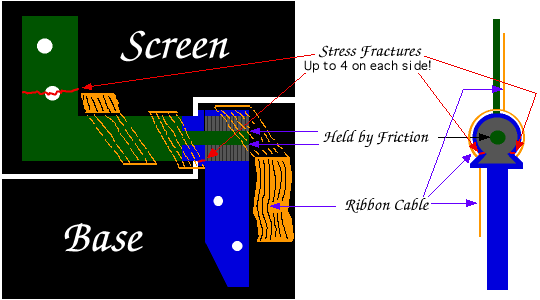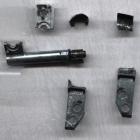- While Apple may call this "wear & tear," common sense tells us that
essential non-moving structural elements should not "tear" from wear, unless the
wear is grossly excessive. The occurence of this problem at the frequency
observed is prima facia evidence that there is a design problem. Although no one
has died (that I know of!), this is essentially similar to the Firestone tire
problem.
- While I cannot criticize Apple for its routing of the ribbon cable (the cable
has to get from the screen to the base somehow), its vulnerability to damage from
a broken clutch means that the clutch problem should be an even higher priority,
both from a design and a corporate policy standpoint.
- Because of the cost of repairs (over $400), and in lieu of Apple taking full
responsibility for this problem, the least Apple could do is make new hinges
available, in packs of 2, for those of us who are at least slightly mechanically
inclined and willing to accept the risks of damaging our out-of-warranty laptops.
|

 The failure (and by failure I mean broken and separated parts) happens in the
non-moving, structural parts which hold the friction mechanism together. There
are 4 separate places per hinge (and there are 2 hinges per laptop) which can
fail. One or two stress fractures and you have a loose screen. Three or more, and
your screen may begin separating from the base. Note that the 2 fracture points
seen in the side view are different from the 2 shown in the frontal view.
The failure (and by failure I mean broken and separated parts) happens in the
non-moving, structural parts which hold the friction mechanism together. There
are 4 separate places per hinge (and there are 2 hinges per laptop) which can
fail. One or two stress fractures and you have a loose screen. Three or more, and
your screen may begin separating from the base. Note that the 2 fracture points
seen in the side view are different from the 2 shown in the frontal view.